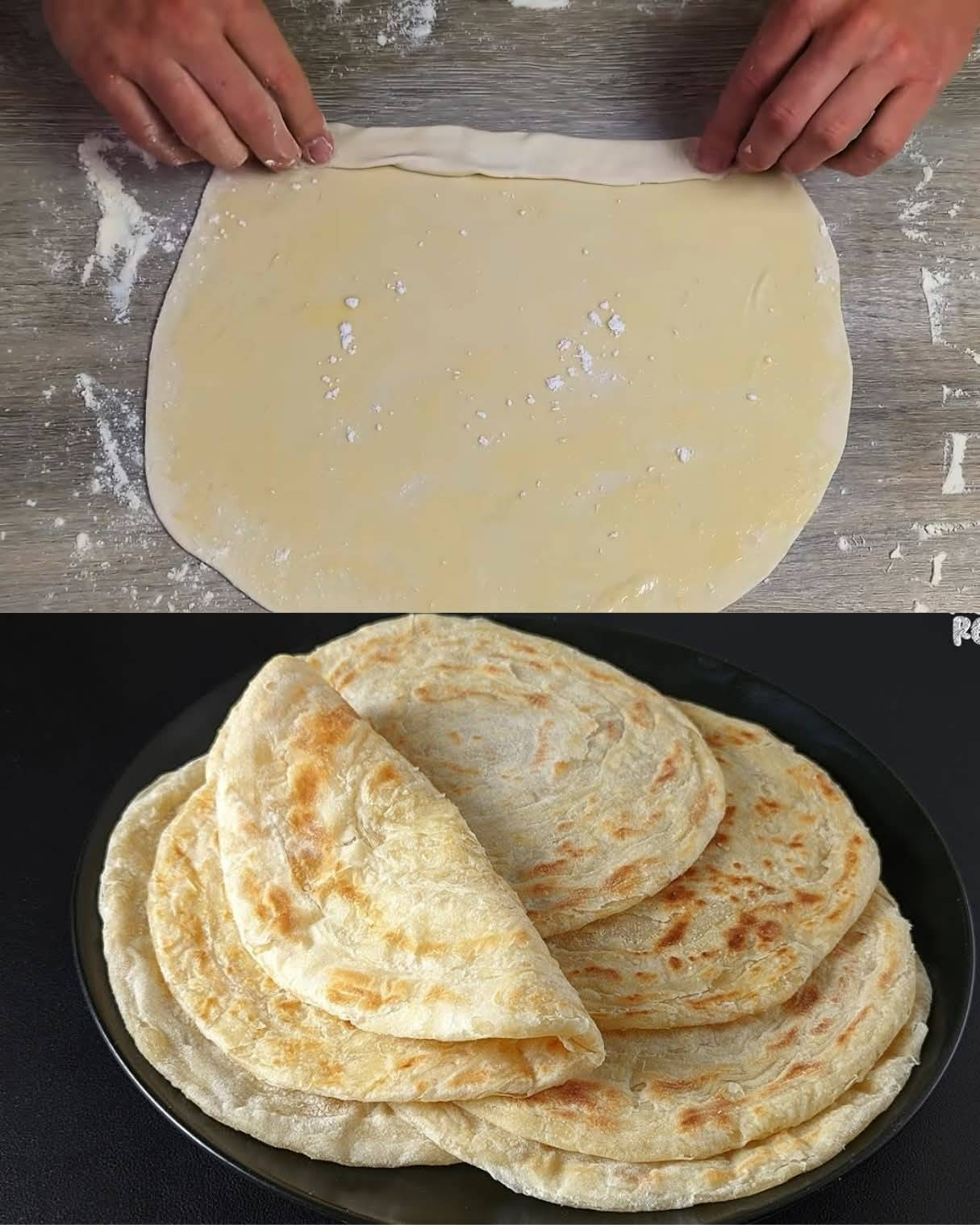ADVERTISEMENT
Prepare the Dough:
In a large bowl, combine warm water, sugar, and yeast. Let it sit for 5-10 minutes until foamy, indicating the yeast is activated.
Add the salt and melted butter (reserve 2 tbsp for brushing later) to the yeast mixture and stir to combine.
Gradually add the flour, mixing with a wooden spoon or your hands until a dough forms.
Transfer the dough to a lightly floured surface and knead for about 8-10 minutes until smooth and elastic.
Let the Dough Rise:
5. Place the dough in a lightly greased bowl, cover with a damp towel or plastic wrap, and let it rise in a warm place for about 1 hour, or until doubled in size.
Shape the Dough:
6. Once risen, punch down the dough to release air. Shape it into a loaf or divide it into smaller portions for rolls.
7. Place the dough into a greased loaf pan or on a baking sheet. Cover and let it rise again for 30 minutes.
Bake:
8. Preheat your oven to 180°C (350°F).
9. Brush the top of the dough with the reserved melted butter for a golden crust.
10. Bake for 25-30 minutes, or until the bread is golden brown and sounds hollow when tapped.
Cool and Serve:
11. Remove the bread from the oven and let it cool on a wire rack before slicing.
5 Serving Suggestions:
Spread with butter or jam for a simple breakfast.
Use as the base for sandwiches or paninis.
Toast and serve with a side of soup or salad.
Serve alongside pasta or roasted meats as a side dish.
Make French toast or bread pudding with leftovers.
Cooking Tips:
Ensure the water is warm but not too hot (around 110°F/43°C) to activate the yeast.
Knead the dough well for a soft and fluffy texture.
Let the bread cool completely before slicing to prevent it from becoming gummy.
Add herbs or seeds to the dough for additional flavor and texture.
Store leftover bread in a bread box or airtight container to maintain freshness.
Nutritional Benefits:
Provides carbohydrates for energy.
Butter adds a rich flavor and essential fats.
Homemade bread contains no preservatives or additives.
Dietary Information:
Vegetarian.
Can be made vegan by substituting butter with plant-based alternatives.
Nutritional Facts (per slice, approximate):
Calories: 180
Protein: 4 g
Carbs: 28 g
Fat: 6 g
Fiber: 1 g
Sodium: 150 mg
Storage:
Store in an airtight container at room temperature for up to 3 days.
Freeze for up to 1 month; thaw at room temperature and reheat in the oven if desired.
Why You’ll Love This Recipe:
Simple ingredients and steps make it easy to prepare.
Buttery and soft texture perfect for any occasion.
Versatile enough to pair with savory or sweet toppings.
Free of preservatives, making it healthier than store-bought bread.
Conclusion:
This Classic Homemade Bread is a delicious and rewarding recipe that fills your kitchen with the comforting aroma of fresh bread. Its buttery richness and fluffy texture make it perfect for any meal. Bake a loaf today and enjoy the satisfaction of homemade goodness!
10 Frequently Asked Questions with Answers:
Can I use bread flour instead of all-purpose flour?
Yes, bread flour will give a slightly chewier texture.
Can I use active dry yeast instead of instant yeast?
Yes, but dissolve it in warm water and sugar for 10 minutes before using.
How can I make the bread sweeter?
Add an extra tablespoon of sugar or a touch of honey to the dough.
Can I add seeds or nuts to the dough?
Absolutely! Mix in sunflower seeds, sesame seeds, or chopped nuts.
How do I know if the dough is kneaded enough?
It should be smooth and elastic, and a small piece should stretch without breaking.
Can I make this recipe without a loaf pan?
Yes, shape the dough into a freeform loaf or rolls and bake on a baking sheet.
Can I make this bread dairy-free?
Yes, replace butter with olive oil or a plant-based alternative.
How do I prevent the bread from drying out?
Store it in a bread box or wrap it tightly in plastic wrap or foil.
Can I double this recipe?
Yes, simply double all ingredients and divide the dough as needed.
What can I do with leftover bread?
Use it for croutons, breadcrumbs, or bread pudding.
ADVERTISEMENT
ADVERTISEMENT
